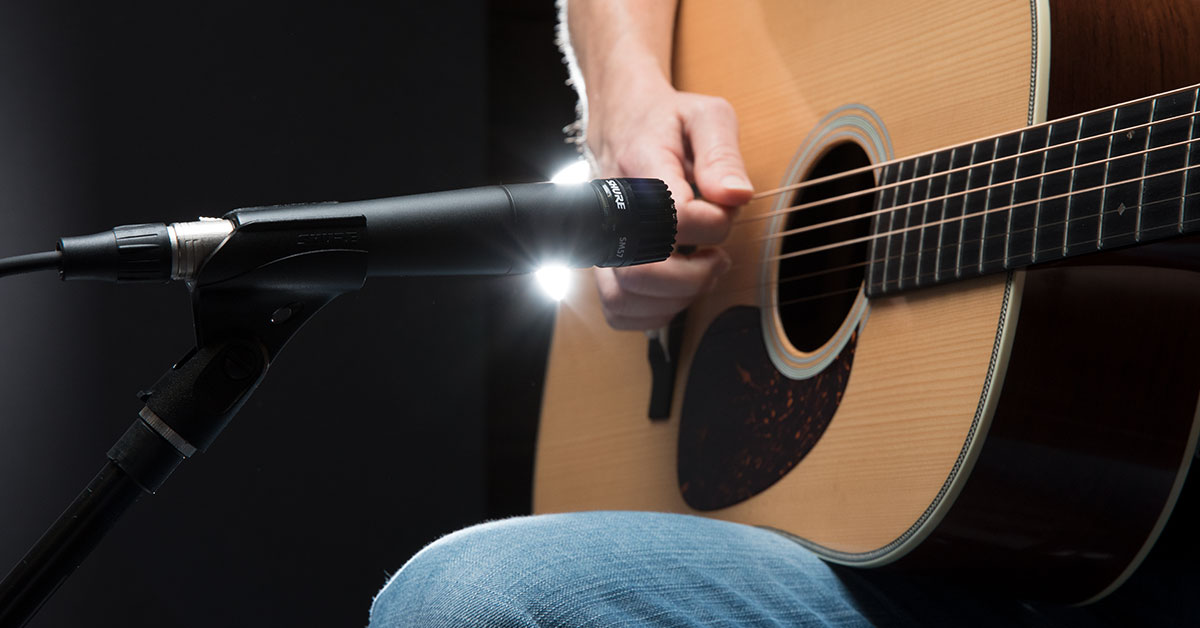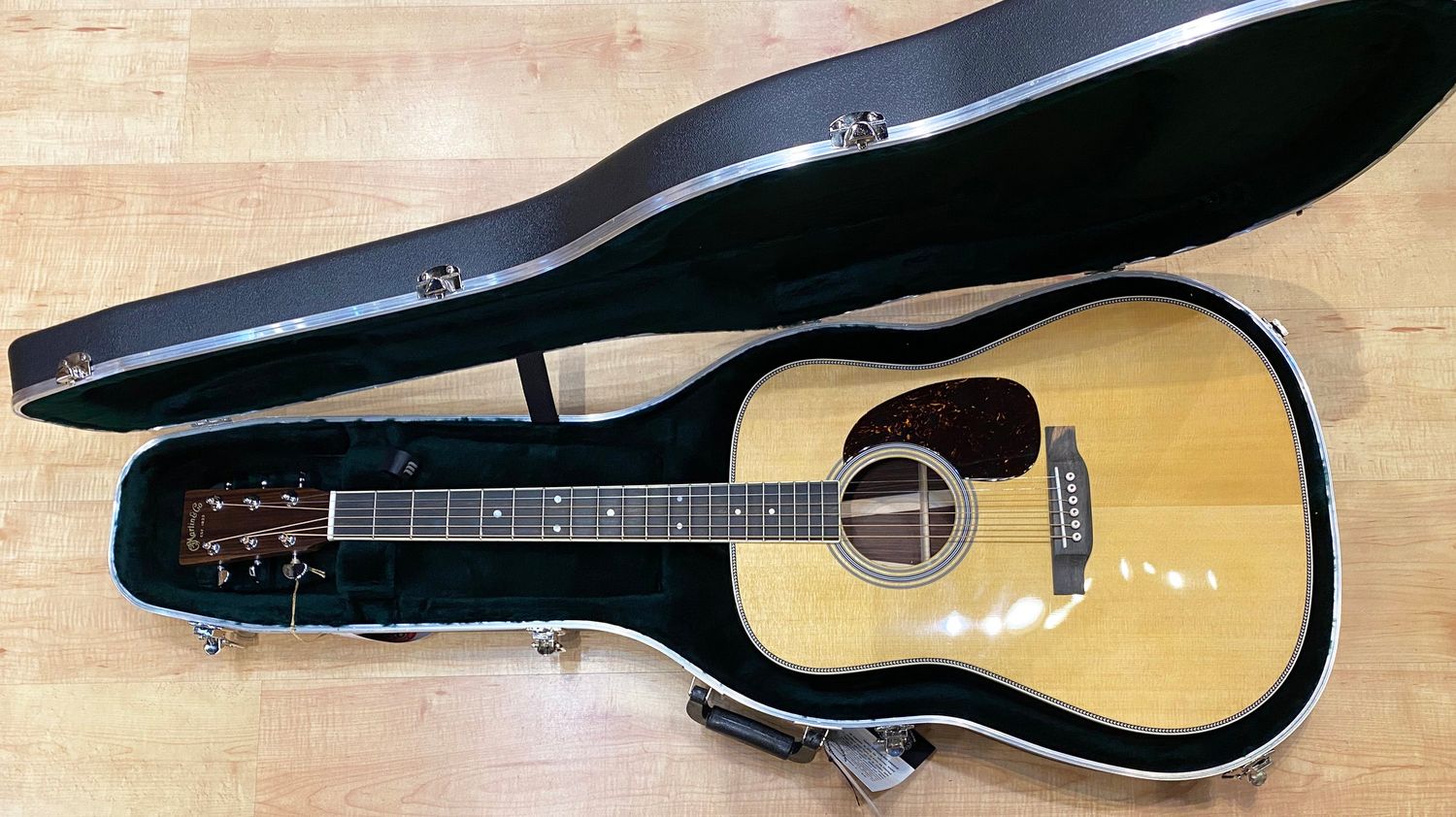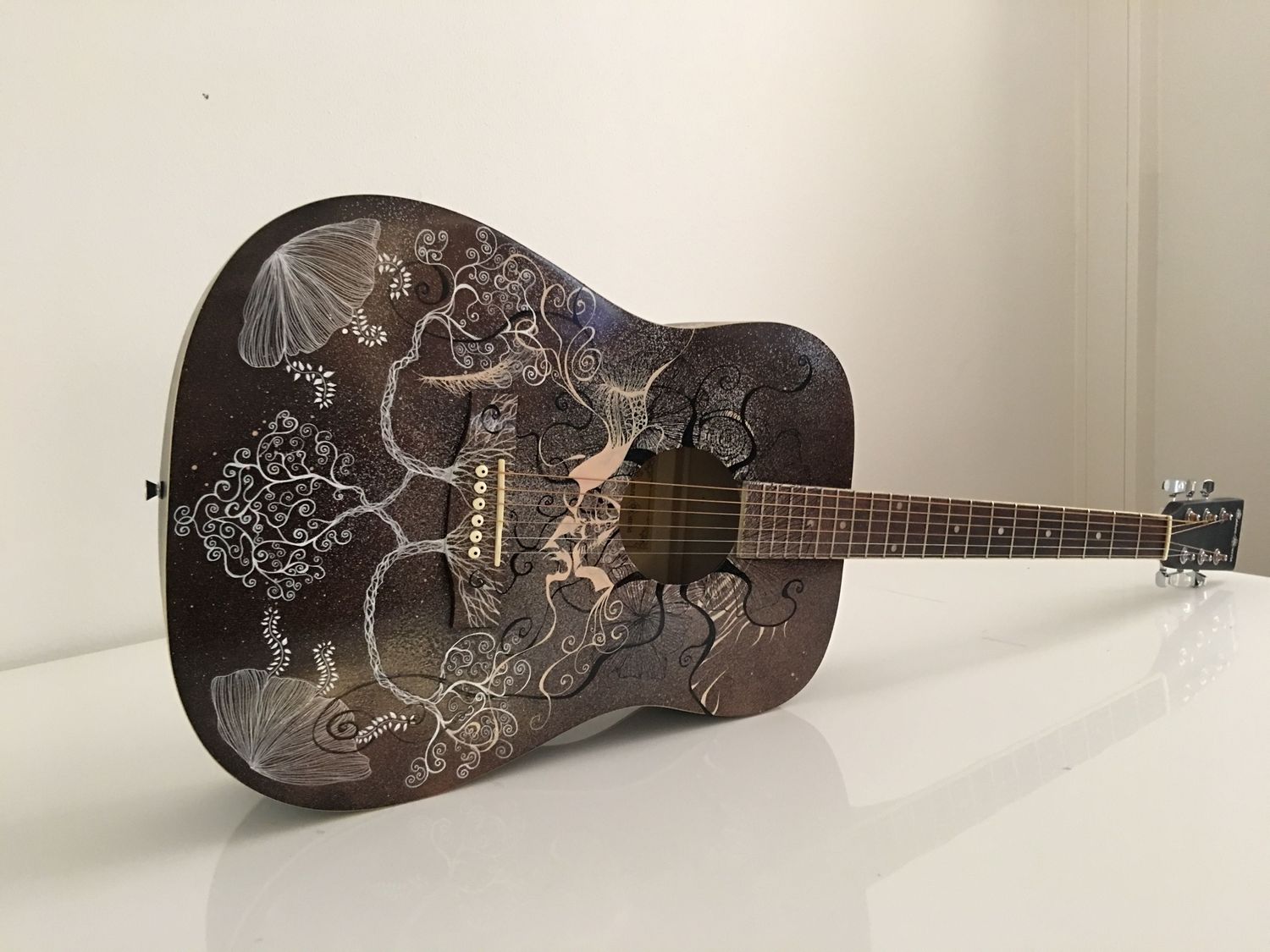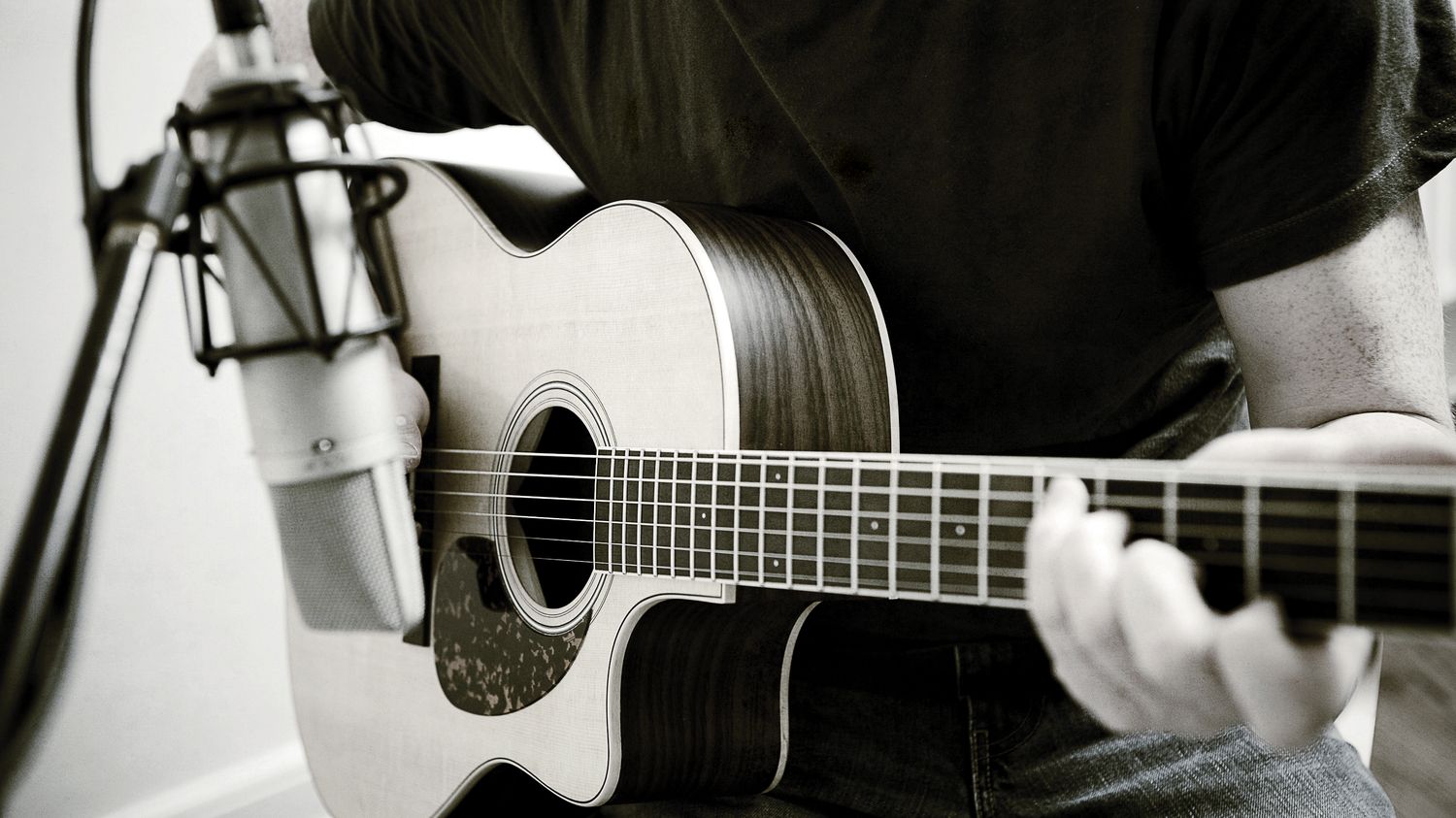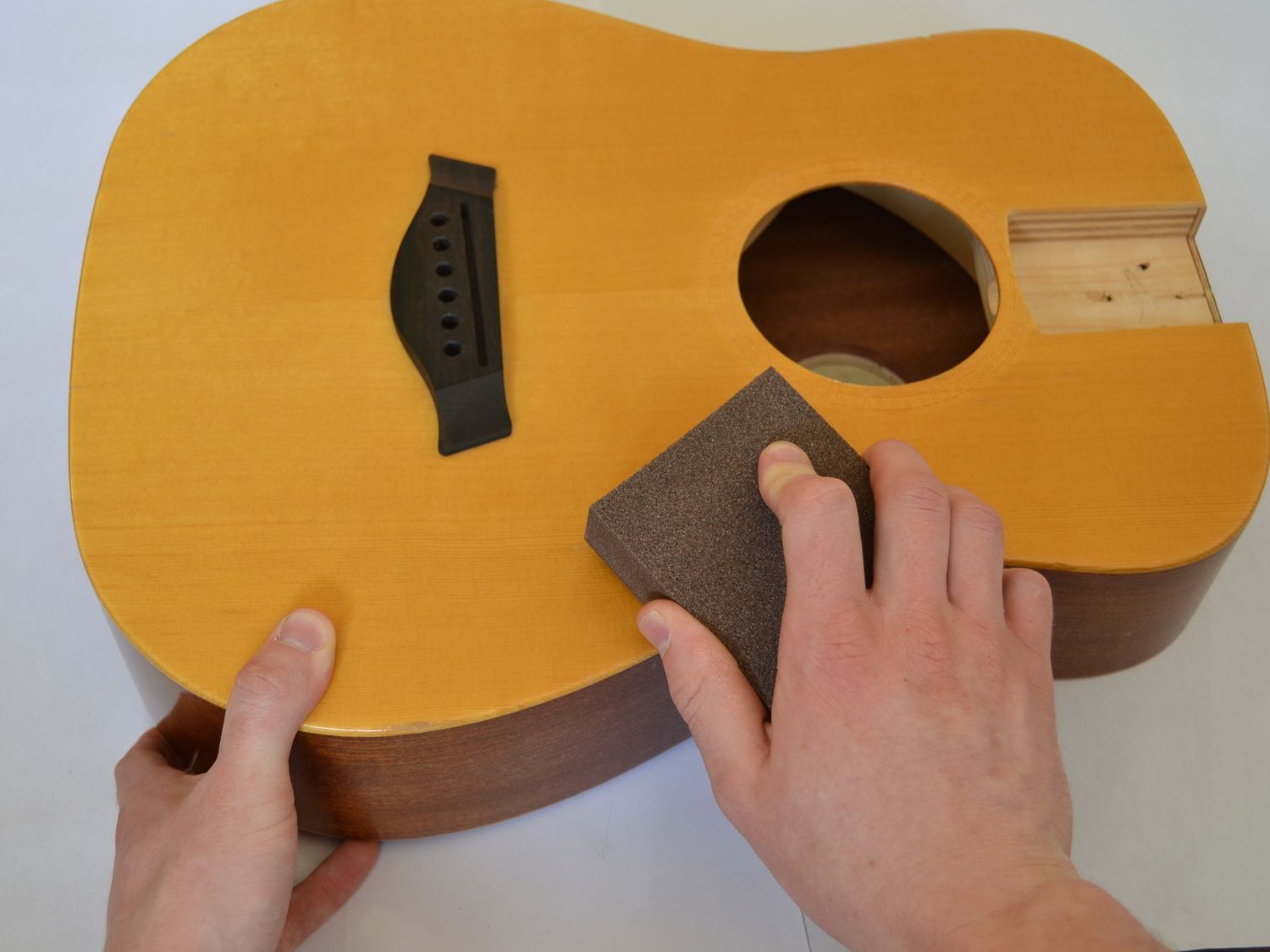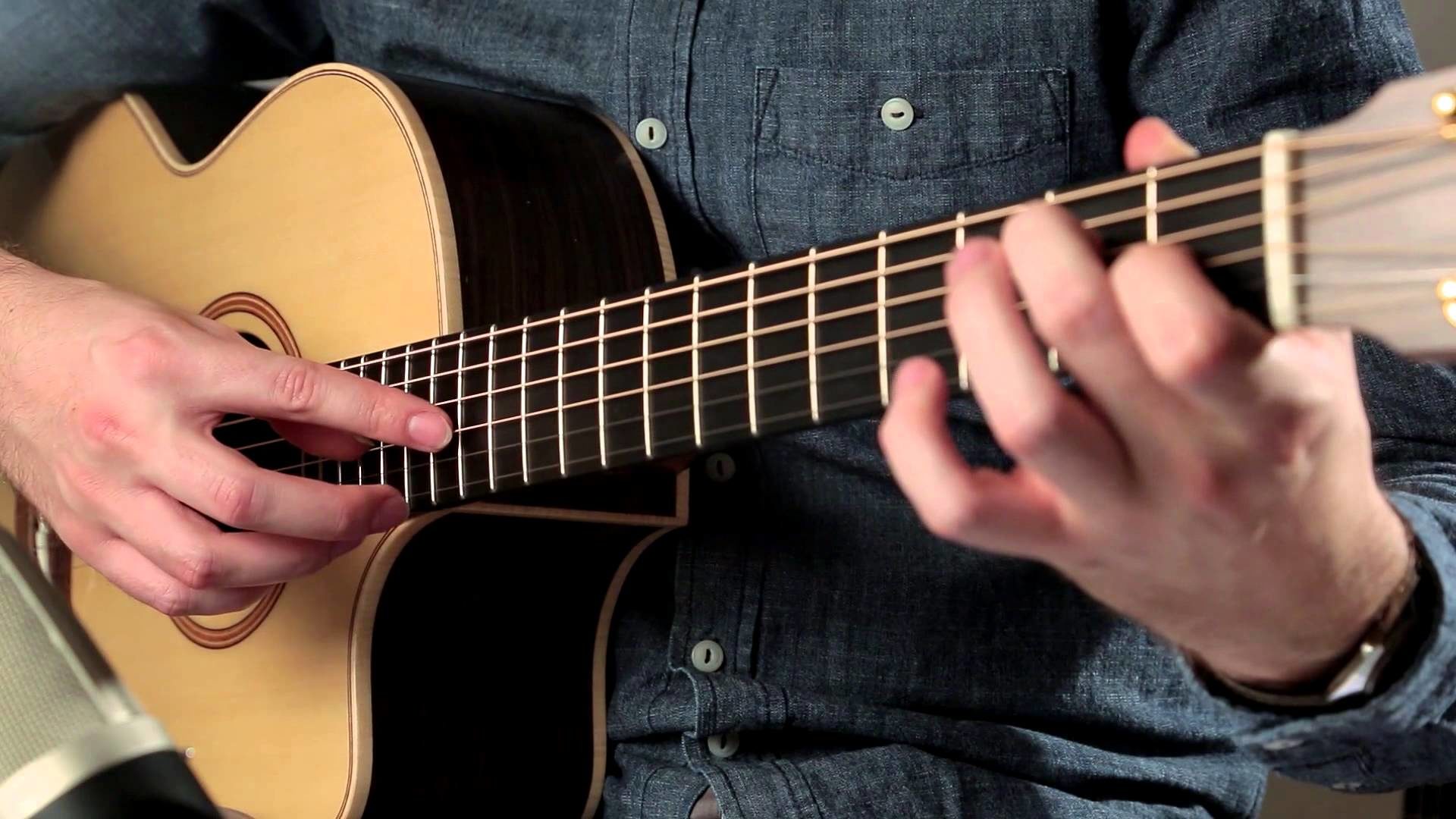Home>Instruments>Guitar>How To Play The Acoustic Guitar
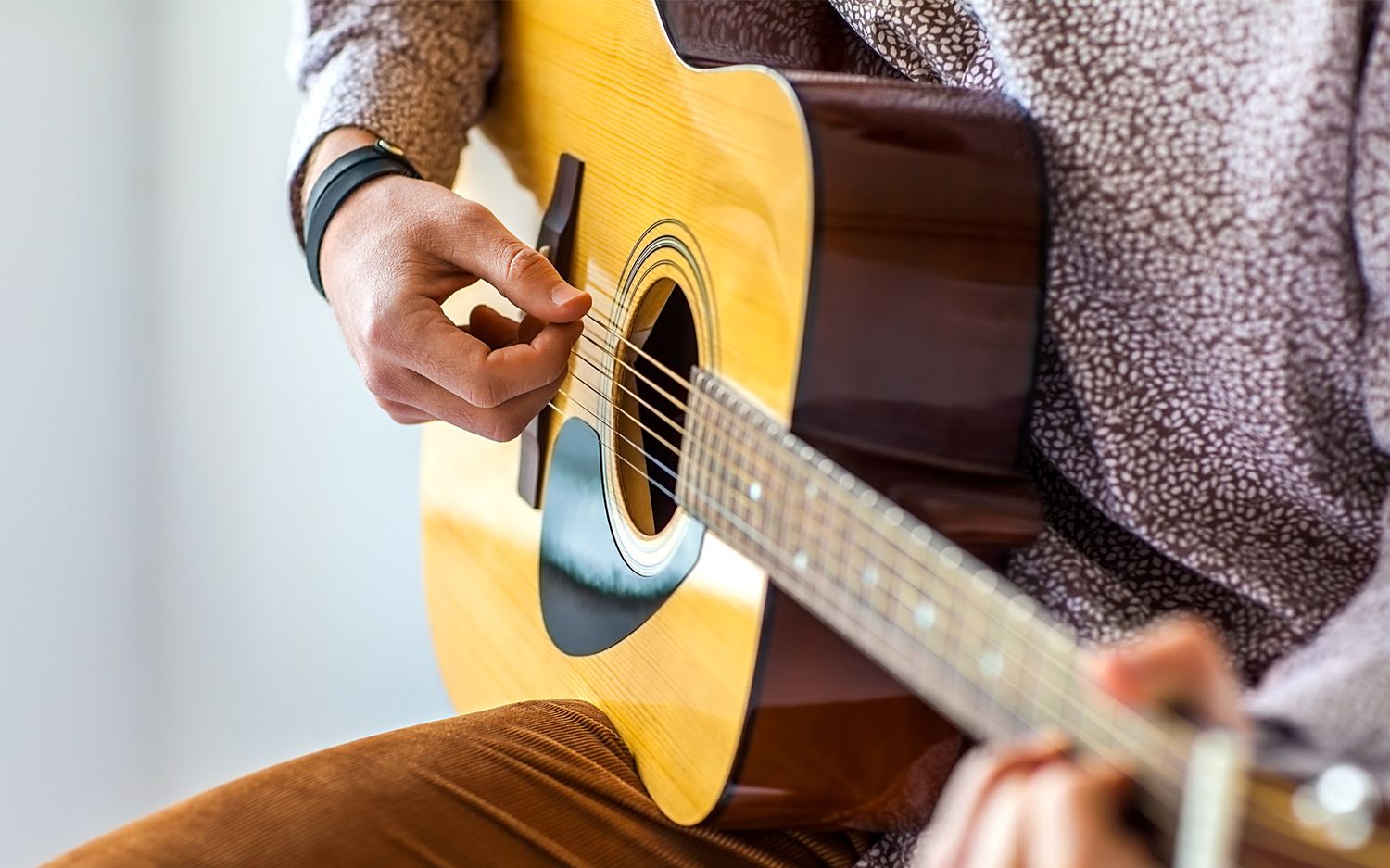

Guitar
How To Play The Acoustic Guitar
Modified: February 15, 2024
Learn how to play the acoustic guitar with our comprehensive guide. Master chords, strumming, and fingerpicking techniques to become a skilled guitarist. Start your musical journey today!
(Many of the links in this article redirect to a specific reviewed product. Your purchase of these products through affiliate links helps to generate commission for AudioLover.com, at no extra cost. Learn more)
Table of Contents
Introduction
Welcome to the world of acoustic guitar playing! Whether you’re a complete beginner or have some experience with other instruments, learning to play the acoustic guitar is an incredibly rewarding journey. The warm, rich tones of an acoustic guitar have the power to captivate audiences and create a magical atmosphere. In this comprehensive guide, we’ll explore everything you need to know to start playing the acoustic guitar with confidence and joy.
Playing the acoustic guitar is not just about making music; it’s about expressing yourself, connecting with others, and finding a creative outlet that can bring immense joy and fulfillment. As you embark on this musical adventure, you’ll discover the versatility of the acoustic guitar, capable of producing a wide range of sounds and styles, from gentle fingerpicked melodies to lively strummed rhythms.
Throughout this guide, we’ll cover essential topics such as selecting the right acoustic guitar for your needs, tuning your instrument, mastering basic chords, exploring various strumming patterns, delving into fingerpicking techniques, and even learning to play some simple songs. As you progress, we’ll also touch on advanced techniques that will take your acoustic guitar playing to the next level.
Whether you aspire to serenade friends around a campfire, perform on stage, or simply enjoy the meditative joy of playing for yourself, the acoustic guitar offers a world of possibilities. So, grab your guitar, find a comfortable spot, and let’s dive into the enchanting realm of acoustic guitar music!
Choosing the Right Acoustic Guitar
When beginning your acoustic guitar journey, one of the most crucial decisions you’ll make is selecting the right instrument. With a myriad of options available, it’s essential to consider several factors to ensure that the guitar you choose aligns with your preferences and playing style.
First and foremost, consider the body style of the guitar. Acoustic guitars come in various shapes and sizes, each offering distinct tonal qualities and ergonomic features. The classic dreadnought shape is known for its balanced sound and robust projection, making it a versatile choice for different playing styles. If you prefer a more focused and midrange-rich tone, a concert or orchestra model might be ideal. On the other hand, a parlor guitar delivers a more intimate and nuanced sound, perfect for fingerstyle playing.
Next, pay attention to the tonewoods used in the construction of the guitar. Different woods impart unique sonic characteristics, so explore options such as spruce, cedar, mahogany, and rosewood to discern the tonal properties that resonate with you. Additionally, consider the neck profile and fretboard material, as these aspects significantly influence the playability and comfort of the instrument.
Furthermore, factor in your budget and long-term commitment to playing the guitar. While it’s tempting to opt for a budget-friendly guitar as a beginner, investing in a high-quality instrument can significantly enhance your playing experience and motivation. Additionally, think about the acoustic-electric capabilities if you intend to perform live or record your music.
Visiting a local music store to test out different guitars is highly recommended. Pay attention to the overall feel, resonance, and playability of each instrument, as these subjective qualities can greatly impact your connection with the guitar. Remember, the right acoustic guitar is not just a tool for making music; it’s a companion that resonates with your musical aspirations and creativity.
By carefully considering these aspects and exploring various options, you’ll be well-equipped to choose an acoustic guitar that inspires and empowers you on your musical journey.
Tuning Your Guitar
Before delving into the world of acoustic guitar playing, it’s essential to familiarize yourself with the process of tuning your instrument. Proper tuning ensures that your guitar produces harmonious and melodious sounds, laying the foundation for enjoyable practice sessions and captivating performances.
The standard tuning for acoustic guitars, from the lowest-pitched string to the highest, is EADGBE. Each letter represents the pitch of the open string when plucked without pressing down any frets. To achieve this tuning, you can use a variety of tools, including digital tuners, tuning forks, or tuning apps on your smartphone. These resources provide visual or auditory cues to help you adjust the tension of each string until it matches the desired pitch.
While electronic tuners offer precise tuning guidance, developing the ability to tune your guitar by ear is a valuable skill that enhances your musical ear and intuition. By comparing the pitch of each string to a reference note, such as a piano or another tuned instrument, you can gradually train your ears to recognize when the strings are perfectly in tune.
It’s important to check your guitar’s tuning regularly, as environmental factors and playing can cause the strings to gradually lose their pitch. Additionally, when learning new songs or practicing with other musicians, tuning your guitar to match the desired key or reference pitch is essential for cohesive and harmonious music-making.
As you progress in your guitar journey, you may explore alternate tunings, such as drop D or open tunings, which offer unique sonic possibilities and enrich your musical repertoire. Experimenting with different tunings can unlock fresh creative avenues and inspire innovative compositions and arrangements.
Remember, the process of tuning your guitar is not merely a technical routine; it’s an opportunity to attune yourself to the instrument’s voice and unleash its full sonic potential. By cultivating a habit of attentive tuning, you’ll embark on your musical endeavors with a harmonious and resonant foundation, ready to explore the expressive realms of acoustic guitar music.
Basic Guitar Chords
Mastering fundamental guitar chords is a pivotal step in your acoustic guitar journey, as it forms the cornerstone of countless songs across various genres. Chords are combinations of notes played simultaneously, creating harmonious textures that underpin melodies and lyrics. By familiarizing yourself with essential chords, you’ll be equipped to strum along to your favorite songs and begin crafting your own musical expressions.
One of the most ubiquitous chords for beginners is the open C major chord. This chord, comprised of the C, E, and G notes, emanates a bright and uplifting sound, making it a popular choice in many songs. Another fundamental chord is the open G major, characterized by its vibrant and resonant quality. As you delve into chord progressions, transitioning between C and G chords will become second nature, laying the groundwork for versatile strumming patterns and melodic explorations.
Exploring the open D major chord introduces a rich and robust tonal character to your repertoire. This chord’s warm resonance and melodic potential make it a valuable addition to your chord vocabulary. Additionally, the open E major chord, with its bright and assertive sound, offers a compelling sonic landscape for crafting dynamic and emotive musical passages.
As you acquaint yourself with these foundational chords, it’s essential to focus on achieving clean and clear fretting and strumming techniques. Pay attention to the placement of your fingers on the fretboard, ensuring that each note rings out distinctly without any muffled or muted sounds. Cultivating a relaxed yet precise strumming motion empowers you to infuse each chord with rhythmic vitality and expressive nuance.
While these basic chords serve as a springboard for your guitar journey, they also pave the way for more advanced chord shapes and voicings. Embracing the practice of transitioning between chords smoothly and efficiently will enhance your playing fluency and musical dexterity. Moreover, understanding the theory behind chord construction and progression empowers you to unlock the harmonic potential of the guitar and embark on creative musical explorations.
By immersing yourself in the world of basic guitar chords, you’ll lay a solid foundation for your acoustic guitar odyssey, fostering a deep connection with the instrument and the boundless possibilities of musical expression.
Strumming Patterns
Mastering diverse strumming patterns is essential for infusing rhythm and dynamics into your acoustic guitar playing. Strumming patterns dictate the flow and groove of a song, adding texture and momentum to your musical interpretations. Whether you’re strumming along to folk ballads, pop anthems, or rock classics, developing a versatile repertoire of strumming techniques will elevate your musical performances and creative expressions.
One of the foundational strumming patterns for beginners is the downstroke strum. This straightforward technique involves sweeping your pick or fingers downward across the strings, producing a consistent and driving rhythm. As you acquaint yourself with the downstroke, focus on maintaining a steady tempo and achieving uniformity in the volume and articulation of each strum.
Expanding your strumming arsenal, the down-up strumming pattern introduces an alternating motion, with the pick or fingers moving downward and then upward in a fluid and continuous motion. This pattern enhances the rhythmic complexity of your playing, enabling you to imbue songs with dynamic accents and percussive energy.
Furthermore, exploring syncopated strumming patterns adds syncopation and groove to your guitar arrangements. Syncopation involves emphasizing offbeat rhythms, injecting an infectious and danceable feel into your playing. By integrating syncopated strumming into your repertoire, you’ll infuse your music with a lively and captivating pulse, inviting listeners to tap their feet and sway to the beat.
As you delve into more intricate strumming patterns, such as the fingerstyle approach, you’ll unlock a world of expressive possibilities. Fingerstyle strumming involves using your fingertips to pluck and strum the strings, allowing for nuanced control over individual notes and chord voicings. This technique lends itself to intricate and melodic interpretations, enriching your acoustic guitar performances with delicate textures and emotive phrasing.
Embracing the art of strumming patterns is not merely a technical pursuit; it’s an avenue for infusing your music with personality, emotion, and rhythmic vitality. By honing your strumming techniques, you’ll transform your acoustic guitar playing into a captivating and immersive sonic experience, inviting listeners to embark on a rhythmic journey through the evocative landscapes of music.
Fingerpicking Techniques
Delving into fingerpicking techniques opens a gateway to a world of intricate melodies, harmonies, and rhythmic textures on the acoustic guitar. Fingerpicking, also known as fingerstyle playing, allows you to pluck individual strings with your fingertips, creating a rich tapestry of sound that encompasses bass notes, chordal arpeggios, and melodic flourishes. This approach offers a nuanced and expressive avenue for interpreting songs and crafting original compositions, infusing your music with depth and complexity.
One of the fundamental fingerpicking patterns is the alternating bass technique. This method involves assigning specific fingers to pluck the lower (bass) strings in a consistent alternating pattern while using the remaining fingers to articulate the higher strings. The result is a rhythmic and melodic interplay that forms the foundation of many fingerstyle arrangements, providing a solid rhythmic framework while allowing for intricate embellishments and variations.
Exploring the Travis picking style introduces a dynamic and versatile approach to fingerpicking. Named after the influential guitarist Merle Travis, this technique involves a syncopated pattern of thumbpicks on the bass strings, interspersed with plucking the higher strings with the remaining fingers. Travis picking imbues your playing with a lively and syncopated feel, enabling you to evoke a full-band sound from the acoustic guitar through the deft coordination of thumb and finger movements.
Additionally, the use of fingerpicking patterns such as arpeggios and cascading runs allows for the creation of intricate and melodically rich passages. Arpeggios involve sequentially plucking the individual notes of a chord, creating a shimmering and harmonically vibrant sound. Cascading runs, on the other hand, entail fluidly descending or ascending patterns across the strings, imparting a sense of movement and fluidity to your fingerstyle compositions.
As you immerse yourself in fingerpicking techniques, pay attention to the development of finger independence and dexterity. Cultivating precise control over each finger enables you to execute intricate patterns and expressively shape the dynamics and phrasing of your playing. Moreover, experimenting with fingerstyle arrangements of familiar songs and crafting original compositions nurtures your creativity and expands your musical horizons.
Embracing fingerpicking techniques is an enriching and rewarding endeavor, offering a pathway to deeply expressive and evocative acoustic guitar playing. By honing your fingerstyle skills, you’ll unlock a world of melodic possibilities and imbue your music with the captivating allure of intricate fingerpicked arrangements.
Playing Simple Songs
Embarking on your acoustic guitar journey involves the joyous exploration of playing simple songs, which serve as stepping stones to building confidence, honing techniques, and experiencing the sheer pleasure of making music. Simple songs, often characterized by familiar chord progressions and straightforward melodies, provide an ideal entry point for beginners, fostering a sense of accomplishment and musical fulfillment.
One of the quintessential elements of playing simple songs is mastering common chord progressions. Progressions such as G, C, D, and Em form the backbone of countless popular songs, offering a versatile palette for crafting melodic and harmonic expressions. By familiarizing yourself with these foundational chords and their transitions, you’ll be equipped to strum along to a myriad of beloved tunes across various genres.
As you delve into playing simple songs, focus on developing a keen sense of rhythm and timing. Pay attention to the strumming patterns and chord changes, ensuring that your playing maintains a steady and engaging pulse. By internalizing the rhythmic nuances of each song, you’ll infuse your performances with dynamic energy and musical coherence.
Exploring songs with straightforward melodies and sing-along appeal enhances your musical repertoire and fosters a deep connection with the expressive potential of the acoustic guitar. Melodic compositions that feature repetitive motifs and catchy hooks provide an ideal platform for honing your fingerpicking techniques and exploring the melodic range of the instrument.
Furthermore, delving into the art of playing simple songs nurtures your ear for musical nuances and enhances your ability to interpret and express the emotional essence of a song. Whether it’s a poignant ballad, an uplifting folk tune, or a timeless pop classic, each simple song offers a canvas for infusing your unique musical sensibilities and personal interpretations.
As you progress in your acoustic guitar journey, don’t underestimate the transformative power of playing simple songs. Each song serves as a milestone, marking your growth as a musician and deepening your connection with the instrument. Whether you’re strumming around a campfire, serenading loved ones, or simply reveling in the joy of musical self-expression, simple songs embody the heart and soul of acoustic guitar playing.
Advanced Techniques
As you continue to expand your acoustic guitar prowess, delving into advanced techniques opens a world of sonic possibilities and artistic expression. These techniques, characterized by their complexity and finesse, elevate your playing to new heights, enabling you to craft intricate arrangements, captivating melodies, and dynamic performances that captivate and inspire listeners.
One of the hallmark advanced techniques in acoustic guitar playing is the incorporation of percussive elements. By integrating percussive techniques such as tapping, slapping, and body percussion, you can transform your guitar into a rhythmic powerhouse, infusing your music with a vibrant and dynamic percussive backbone. These techniques add depth and rhythmic complexity to your playing, creating an immersive and engaging sonic tapestry.
Another advanced technique that enriches acoustic guitar performances is the use of harmonics. Natural harmonics, produced by lightly touching the strings at specific nodal points, yield ethereal and bell-like tones that imbue your compositions with a celestial quality. Artificial harmonics, achieved by fretting a note and simultaneously plucking a harmonic twelve frets higher, add a dazzling and melodic dimension to your playing, expanding the sonic palette of the acoustic guitar.
Exploring the art of fingerstyle tapping and two-handed tapping techniques unlocks a world of expressive and virtuosic possibilities. By employing both hands to create intricate and rapid sequences of notes, you can craft mesmerizing and technically dazzling passages that showcase the full potential of the acoustic guitar as a solo instrument. These techniques enable you to weave complex melodies and harmonies, blurring the boundaries between rhythm and lead playing.
Furthermore, the incorporation of altered tunings, such as open tunings and modal tunings, offers a transformative approach to acoustic guitar playing. Altered tunings expand the harmonic range and timbral textures of the instrument, allowing for unconventional chord voicings, resonant drones, and evocative tonal landscapes. By embracing altered tunings, you’ll unlock fresh creative avenues and reimagine the sonic possibilities of the acoustic guitar.
As you immerse yourself in advanced techniques, it’s essential to approach them with patience, dedication, and a spirit of exploration. These techniques offer a boundless frontier for artistic expression and musical innovation, empowering you to craft evocative compositions and captivating performances that resonate deeply with audiences and fellow musicians.
Conclusion
Congratulations on embarking on your acoustic guitar journey and delving into the multifaceted realm of acoustic guitar playing. Throughout this comprehensive guide, we’ve explored essential aspects of mastering the acoustic guitar, from selecting the right instrument to honing advanced techniques. As you continue on this musical odyssey, remember that the true essence of acoustic guitar playing lies in the joy of self-expression, creativity, and connection.
By choosing the right acoustic guitar that resonates with your musical aspirations, you’ve laid a solid foundation for your musical endeavors. Tuning your guitar with precision and care ensures that your instrument’s voice remains harmonious and resonant, ready to accompany you on your musical explorations.
Mastering basic guitar chords and strumming patterns empowers you to infuse your playing with rhythmic vitality and melodic expression, while delving into fingerpicking techniques unlocks a world of intricate melodies and harmonies. Playing simple songs serves as a gateway to building confidence and honing your musical skills, fostering a deep connection with the expressive potential of the acoustic guitar.
As you progress, embracing advanced techniques offers a pathway to sonic innovation and artistic expression, enabling you to craft captivating compositions and dynamic performances that resonate deeply with listeners. Each step of your acoustic guitar journey is a testament to your dedication, creativity, and passion for music.
Remember that the essence of acoustic guitar playing transcends technical proficiency; it’s about channeling your emotions, experiences, and imagination through the strings of the guitar. Whether you’re strumming gentle ballads, fingerpicking intricate melodies, or exploring percussive rhythms, your unique musical voice is an invaluable contribution to the rich tapestry of acoustic guitar music.
As you continue to hone your craft, immerse yourself in the beauty of acoustic guitar music, and let your creativity soar. Whether you’re playing for yourself, sharing music with friends, or performing for audiences, may your acoustic guitar journey be filled with inspiration, discovery, and the sheer joy of making music.

